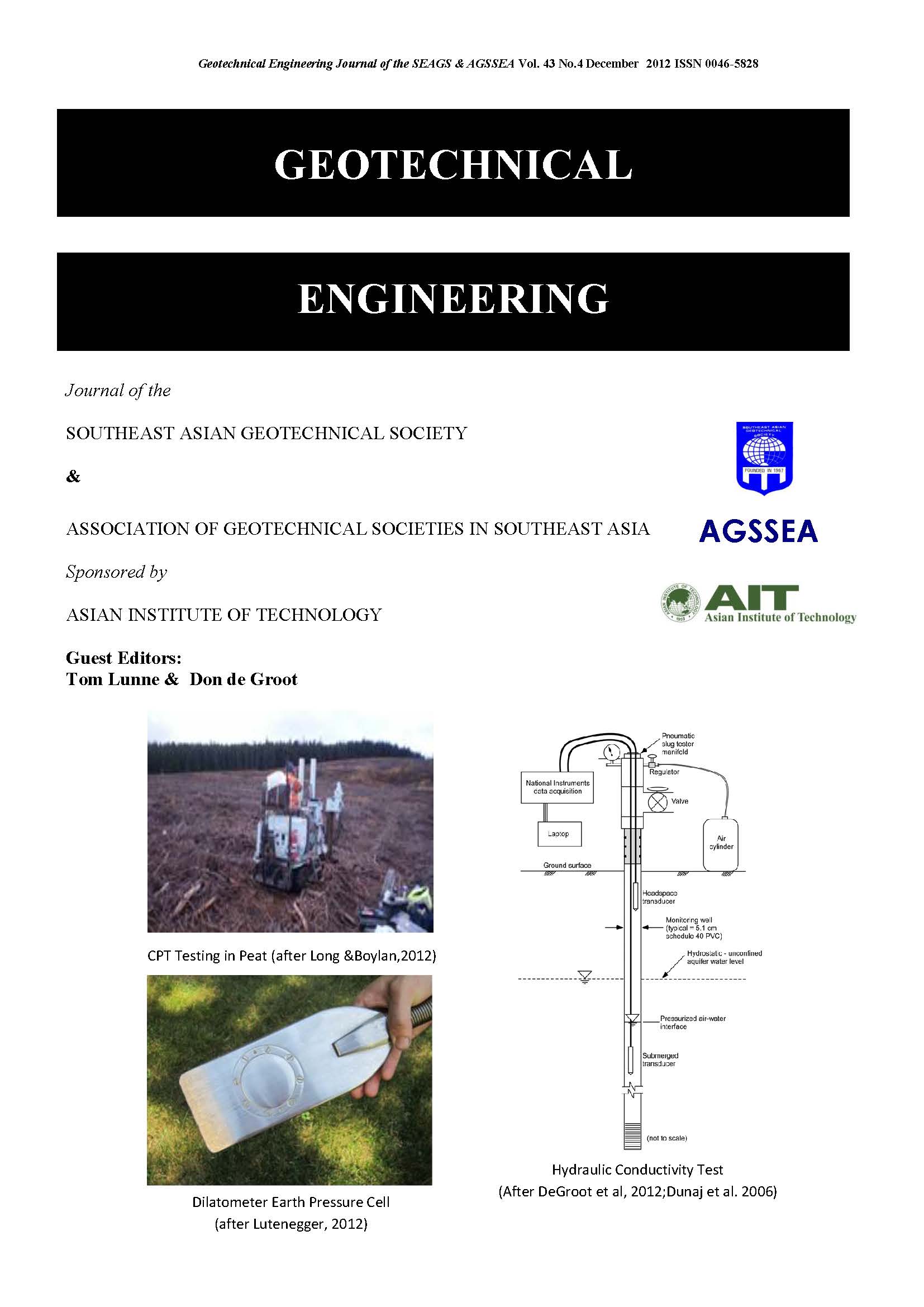In situ testing of peat – a review and update on recent developments
Main Article Content
Abstract
This paper reviews the techniques used and some recent developments on in situ testing of peat for the purposes of the design and surveillance of engineering structures. Geophysical techniques, especially ground penetrating radar, are now being used extensively in peatlands. All geotechnical in-situ tests in peat can be influenced by partial drainage and therefore can give misleading results if not used carefully to well established guidelines and if not interpreted correctly. There is therefore a benefit in multi-measurement tests (e.g. CPTU and piezoball) which give additional information to help assess the drainage condition. There seems promise in the use of the pore pressure measurements for both CPTU and piezoball for the purposes of profiling peat decomposition and possibly shear strength assessment. Field vane testing will frequently give misleading results. Other standard geotechnical techniques may only be useful when used in conjunction with locally derived empirical correlations. Pore pressure measurements in peat may be influenced by the presence of gas in the deposits.
Article Details

This work is licensed under a Creative Commons Attribution-NonCommercial-NoDerivatives 4.0 International License.
Copyright © 2019 Association of Geotechnical Societies in Southeast Asia (AGSSEA) - Southeast Asian Geotechnical Society (SEAGS).


